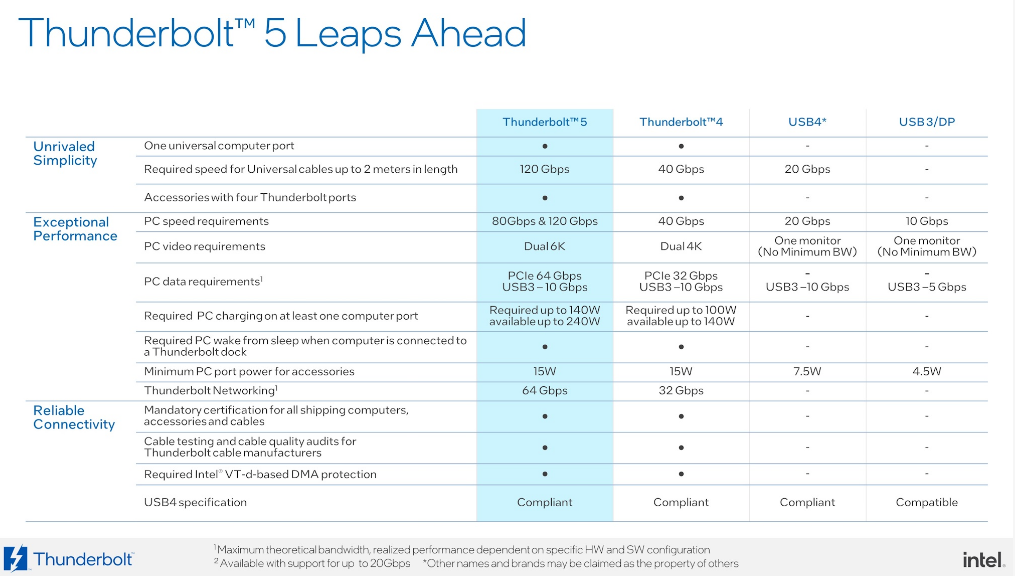So I’ve been doing some homework. I’ve checked on the MS Copilot+ PC hardware requirements. I’ve also looked at related announcements from Qualcomm, Intel and AMD regarding reference designs for such PCs. So far, nobody’s talking about Thunderbolt 5/USB 5 (aka USB4 v2) support on such PCs. That’s kind of a shame, because supporting gear is becoming available for purchase right now (see last week’s post First TB5 NVMe Enclosures Drop for more info). Be that as it may, so far Copilot+ PCs lack fast I/O support via USB-C attached devices. That’s a shame!
If Copilot+ PCs Lack Fast I/O, Then What?
To be fair, USB4 with some degree of TB4 support is baked into the existing specfiications and reference architectures. And, FWIW, the Qualcomm SoC implementation is pretty darn good — not quite as fast as Intel’s but entirely acceptable. That tells me support for TB5/USB5 is probably coming “real soon now” (to resurrect Jerry Pournelle’s famous phrase from his Chaos Manor column).
My best guess is we’ll see a revision to Copilot+ PC specifications some time later this year (the original set emerged in May 2024). I’m thinking sometime around or shortly after the first anniversary seems pretty likely.
In the meantime, Copilot+ PC users will have to live with 3-3,500 Mbps read/write speeds typical of USB4/TB4 device chains for NVMe storage devices. The new spec should double those numbers, and make those who use external NVMe storage for videos, backups and other high-volume, high-traffic I/O applications happy.
You’ll Pay for That Pleasure, Though
If what I’m seeing for NVMe enclosure costs is any indication — namely US$200 and up — users who buy into faster I/O sooner rather than later will pay a premium for those speeds. The Acasis 40 Gbps enclosures run US$90 (fanless) or US$110 (with fan). The same vendor’s TB5 model has an MSRP of US$299 (and is available on sale at Newegg right now for US$239). Yikes!
Note, Intel unveiled its specs and controllers for Barlow Ridge TB5 on January 9 (last Thursday) so it’s no wonder that PCs with such circuitry built in are hard to find right now. Go figure! Hopefully, licensees will ante up soon. I’m curious to see if once again Qualcomm will reverse engineer this stuff… The comparison slide vis-a-vis TB4, USB4 and USB3/DP from Intel’s Jan 9 announcement serves as the lead-in graphic for this very blog post, in fact.
